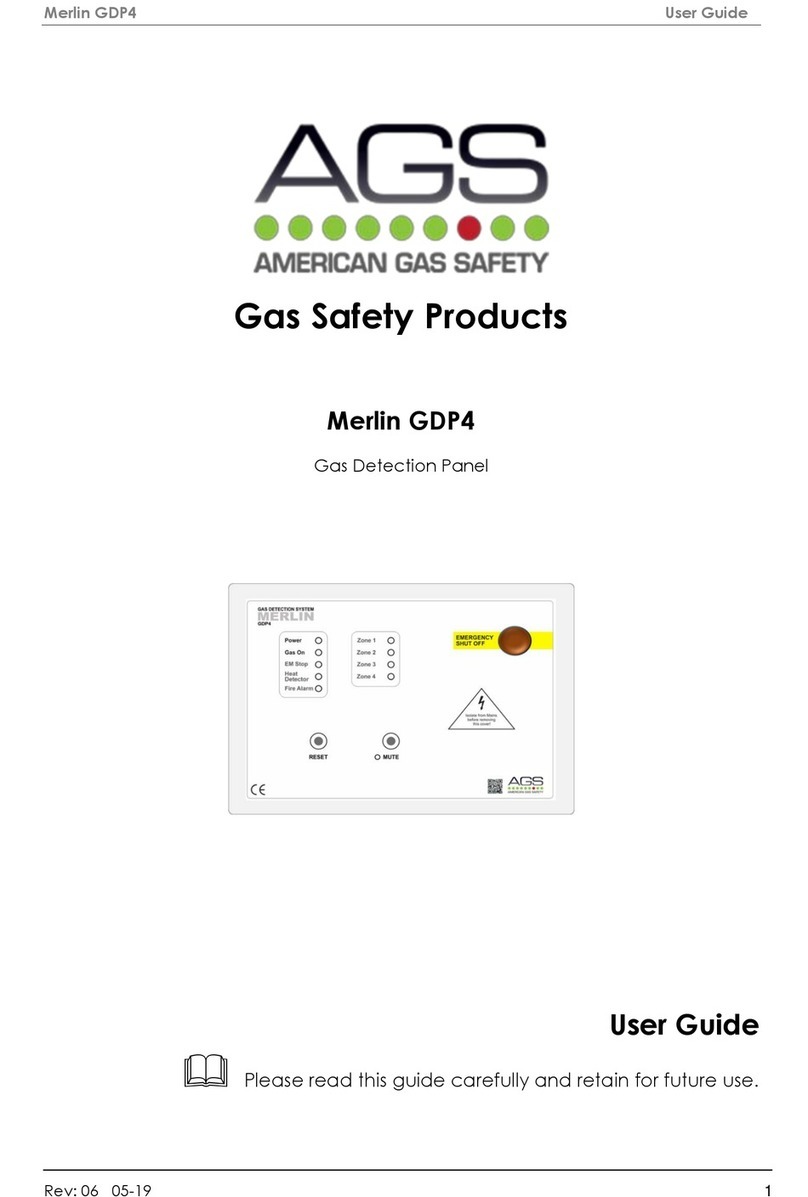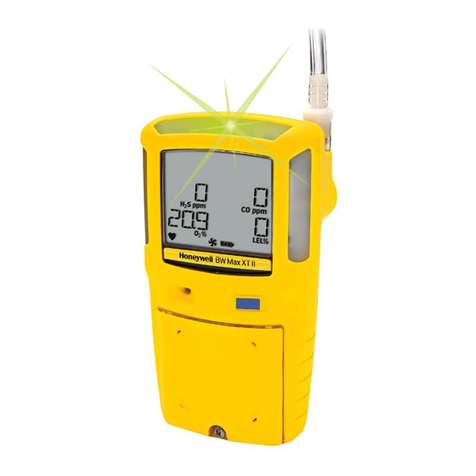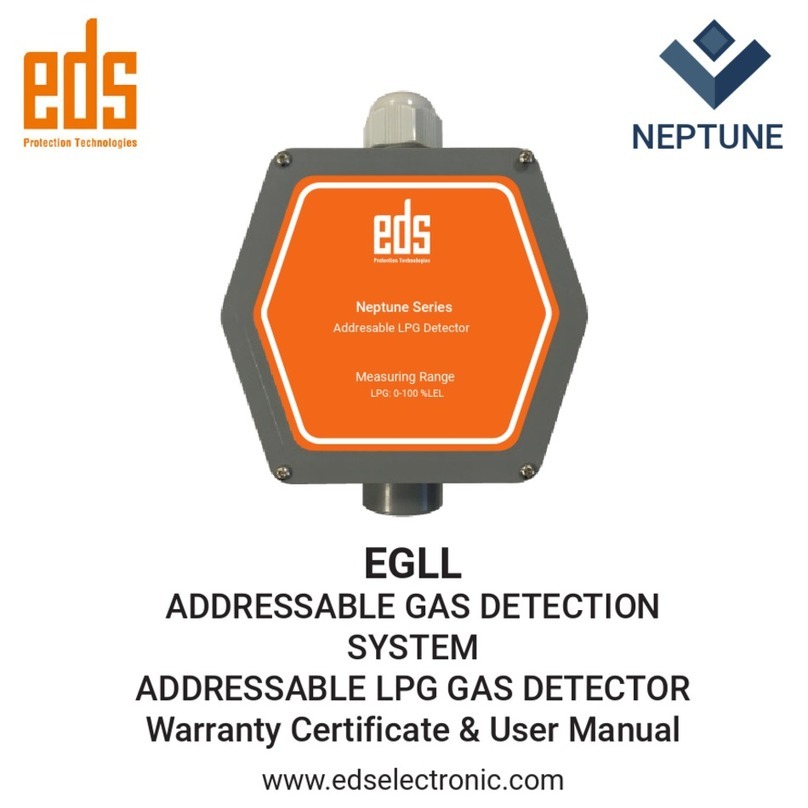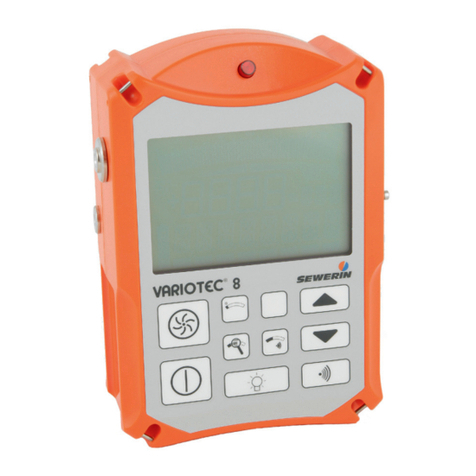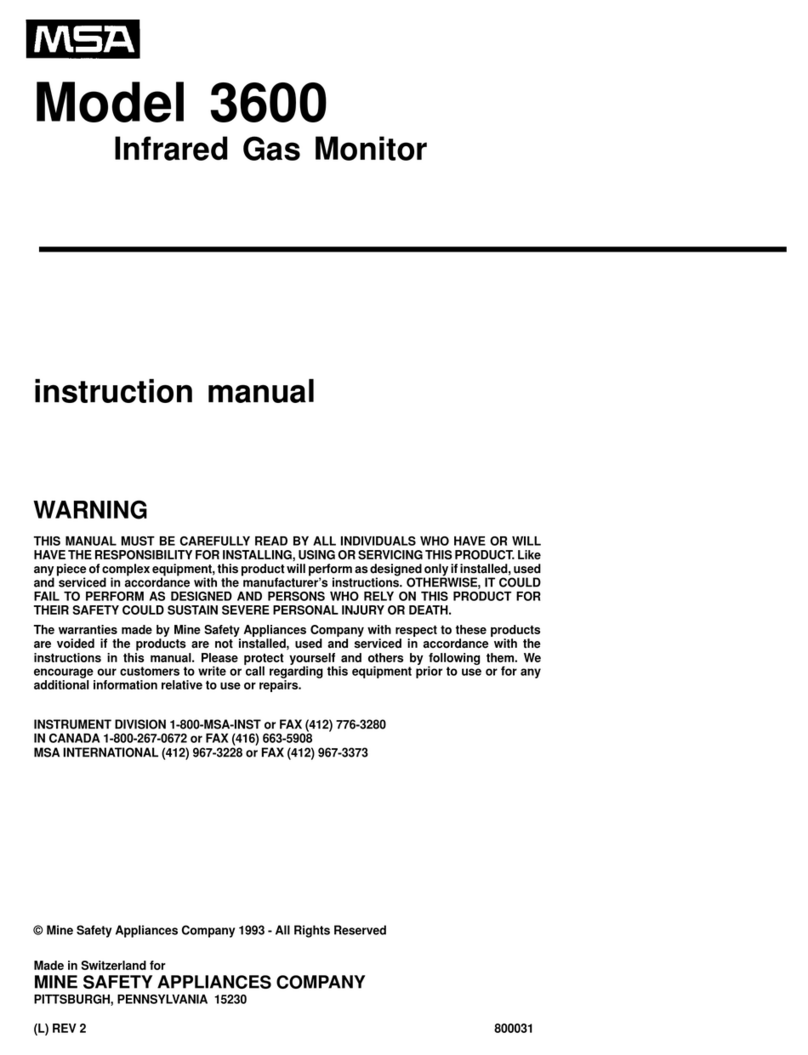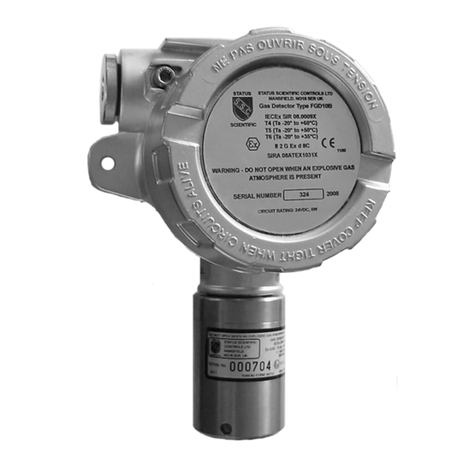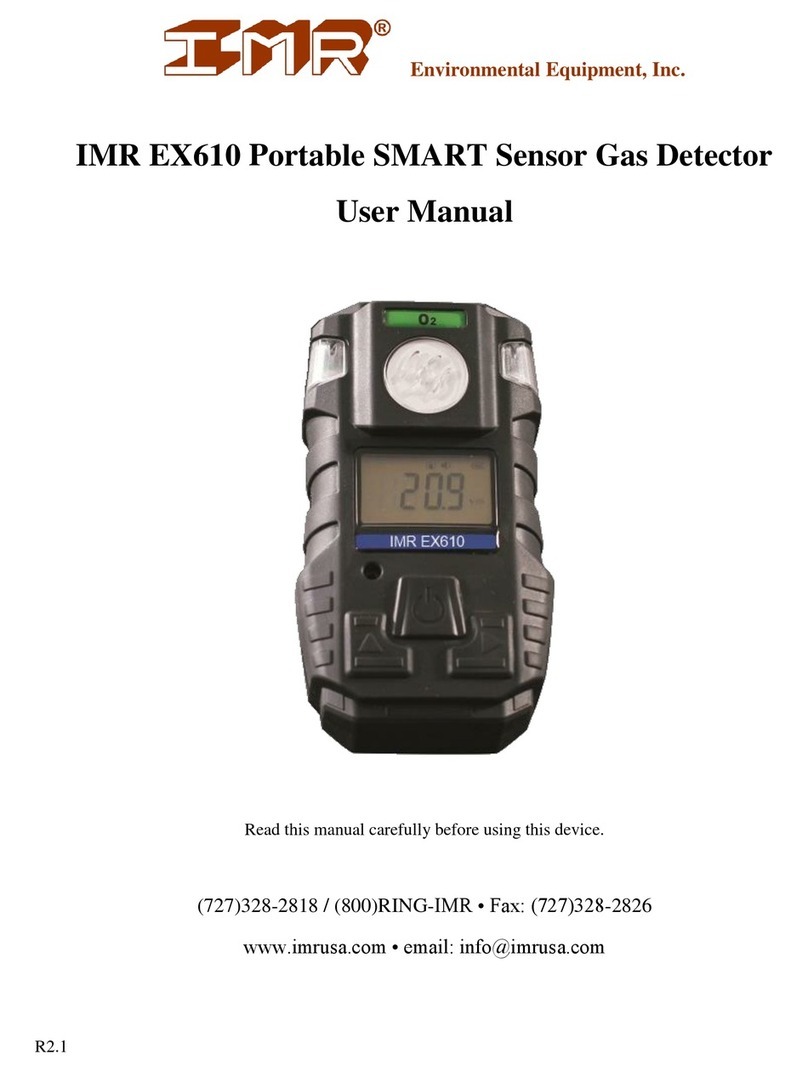Geca CTM21 User manual

DIS. 0534018 COD. 27101448 Istruzione / User’s Manual Pag.1/4
Centrale rivelazione gas per centrali termiche
Gas detector central unit for heating plants
GECA Srl Via E. Fermi 98, 25064 Gussago (Brescia) Italy http://www.gecasrl.it Tel:+39 030/3730218 Fax: +39 030/3730228
CTM21
Sensori collegabili al CTM21
Sensors which can be connected to the CTM21
Modello / Model
Caratteristiche / Features
ST441M
Metano / Methane -IP44
ST441G
GPL / LPG -IP44
Caratteristiche tecniche / Technical specifications
Alimentazione con sensore / Power supply with sensor
230Vac (-15/+10%) 50Hz / 4VA
Temp./umidità di funzionamento / Operation Temp./Humidity
-10 ÷ +50 °C / 5÷90 % r.h. 40°C
Temp./umidità di immagazzinamento / Storage Temp./Humidity
-25 ÷ +55°C / 5÷95 % r.h.
Intervento allarme / Alarm intervention
10% LIE / LEL
Intervento blocco / Lock intervention
20% LIE / LEL
Contatti relè / Contacts rating
230Vac 3A SPDT
Dimensioni / Size
160 x 115 x 80 mm) / IP54
Sensore esterno / Remote sensor
Catalitico / Catalityc
DESCRIZIONE
CTM21 è una centrale per montaggio a parete con un
sensore remoto di tipo catalitico per gas infiammabili.
Possono essere collegati sia i sensori tarati per Metano
che per GPL. Il grado di protezione dell'apparecchio è
IP54.
Sulla targa frontale è visibile la barra Led che indica lo sta-
to di funzionamento e la concentrazione di gas rilevata dal
sensore.
La centrale è dotata di due livelli di allarme con uscite a
relè di tipo sigillato normalmente eccitati con contatti in
scambio liberi da tensione.
In Fig.1 è illustrato un tipico collegamento da rete con si-
rena di allarme ed elettrovalvola normalmente chiusa.
FUNZIONAMENTO
Quando la concentrazione di Gas raggiunge il 10% del
LIE, cui corrisponde l'accensione del secondo Led rosso,
interviene il primo relè "ALARM1" che viene normalmente
utilizzato per comandare una sirena (Mod.SE301A).
Quando la concentrazione di Gas raggiunge il 20%LIE si
illumina il 3° Led rosso e dopo 30 secondi si attiva il se-
condo relè "ALARM 2" per il blocco del gas tramite elet-
trovalvola e/o l'interruzione dell'energia elettrica.
Quando si attiva il relè "ALARM 2", si accende il 4° Led
rosso, il relè e la barra Led restano attivati, fino a quando,
eliminata la causa di allarme, non viene premuto il pulsan-
te "RESET". Quest'ultimo, per sicurezza, non interviene se
il sensore sta rilevando gas.
Quando si verifica una situazione di guasto del sensore,
interviene il terzo relè "FAULT" e si illumina il Led giallo.
INSTALLAZIONE
Il Metano (CH4) è un gas più leggero dell'aria, la sua den-
sità relativa all'aria è 0,55, il suo LIE (Limite inferiore di e-
splosività è 5%v/v (% Volume).
DESCRIPTION
The CTM21 is a gas detector to be wall-mounted. It is
rated to IP54. It has one remote catalytic sensor for
flammable gases calibrated for Methane or LPG.
On the front plate the LED bar shows both the work-
ing condition and the gas concentration detected by
the sensor.
The instrument is supplied with two alarm levels with
sealed-type normally-activated relays outputs (ten-
sion-free change over contacts).
Fig. 1 shows a typical mains supply wiring diagram
with alarm siren and normally closed solenoid valve.
OPERATIONAL DESCRIPTION
When the gas concentration attains 10% LEL (illumi-
nation of the 2nd red LED), the first "ALARM 1" relay
will deactivate.
This relay is normally used as a prealarm for the con-
trolling of a siren (model SE301A).
When the Gas concentration attains 20% LEL, the
3rd red LED will illuminate and after 30 seconds the
second "ALARM 2" relay will deactivate.
This relay is used for the gas cut-off gas by means of
a solenoid valve and/or the interruption of the electric
energy).
When the relay activates, the 4th red LED illuminates.
Both the relay and the LED bar keep activating until the
"RESET" button is pushed after removing the cause of the
alarm. For security reasons, this button cannot operate
when the sensor is detecting gas.
When a sensor fault occurs, the 3rd "FAULT" relay deacti-
vates and the yellow LED illuminates.
INSTALLATION
Methane (CH4) is a gas lighter than air. Its density as to air
is 0.55. Its LEL (Lower Explosivity Limit) is 5%v/v (vol-
ume).

DIS. 0534018 COD. 27101448 Istruzione / User’s Manual Pag.2/4
GECA Srl Via E. Fermi 98, 25064 Gussago (Brescia) Italy http://www.gecasrl.it Tel:+39 030/3730218 Fax: +39 030/3730228
Il GPL è un gas più pesante dell'aria formato da una mi-
scela composta dal 20-30% di Propano (C3H8) e dall'80-
70% di Butano (C4H10). La densità relativa all'aria è 1,56
per il Propano e 2 per il Butano, il LIE è 2,1%v/v per il Pro-
pano e 1,5 %v/v per il Butano. Le tarature per GPL sono
normalmente effettuate con gas Butano.
I sensori devono essere installati come descritto nelle ap-
posite istruzioni ad essi allegate. Dopo l'installazione si de-
ve applicare l'etichetta autoadesiva inserita nella confezio-
ne con il tipo di gas indicato sull'etichetta di collaudo del
sensore remoto.
In Fig.3 sono indicate le dimensioni della centralina che
viene montata a parete con tre tasselli.
In Fig.2 è illustrato lo schema di collegamento da rete con
la sirena ed elettrovalvola normalmente chiusa.
I morsetti sono di tipo ad innesto polarizzati, si consiglia, di
ancorare i cavi nella custodia per evitare eccessive solleci-
tazioni ai morsetti.
La distanza fra la centrale ed il sensore, non deve essere
superiore a 100 metri utilizzando un cavo 3x1,5 mm2. op-
pure non deve essere superiore a 200 metri utilizzando un
cavo 3x2,5 mm2. Non è necessario utilizzare cavi scher-
mati.
La valvola di blocco gas, a riarmo manuale, va installata
all'esterno del locale, in posizione chiaramente segnalata
e protetta dalla pioggia diretta.
Guasti
In caso di guasto del sensore, errato collegamento, inter-
ruzione o cortocircuito dei cavi tra centrale e sensore, si
attiva il relè "FAULT" e la segnalazione ottica a Led giallo
"FAULT".
Quest'ultimo, se richiesto, può essere utilizzato per segna-
lare a distanza un avvenuto guasto o la mancanza di ali-
mentazione alla centralina.
Il relè “FAULT” è normalmente eccitato con contatti in scam-
bio liberi da tensione.
Durante la fase di preriscaldo del sensore, che è di circa
30 secondi, i relè di allarme rimangono inibiti, mentre il Led
giallo e il relè "FAULT" vengono attivati.
Verifiche periodiche
Per verificare il funzionamento della centrale premere il
pulsante "TEST". Si illuminerà la barra Led, si attiverà il
relè "ALARM1", dopo 30 secondi il relè "ALARM2" e il 4°
Led rosso. Per ripristinare le condizioni di funzionamento
normale, premere il pulsante "RESET".
Si consiglia di effettuare la verifica di funzionamento ogni
6-12 mesi.
Avvertenze
ATTENZIONE: il pulsante "TEST" simula un situazio-
ne di allarme e provoca il blocco dell'impianto.
AVVERTENZA IMPORTANTE: La centrale non neces-
sita di regolazioni dopo l'installazione. I trimmer di ta-
ratura sigillati posti sul Circuito Stampato non devo-
no essere manomessi pena la perdita di ogni garanzia
e il pericolo di rendere l'apparecchio non funzionante.
LPG is a gas heavier than air consisting of a mixture of
20-30% Propane (C3H8) and 80-70% Butane (C4H10).
Propane density as to air is 1.56 and its LEL is 1.56%v/v .
Butane density as to air is 2 and its LEL is 2.1%v/v. GPL
remote gas sensors are normally calibrated with Butane.
The remote gas sensor must be installed following instruc-
tions enclosed in its packaging. After installation we advise
to stick the enclosed self-adhesive label that show the
calibrated gas written on the remote sensor test label. Fig.
3 shows the instrument size. It should be wall-mounted by
three screw anchors. Fig. 2 shows the AC powering con-
nection with alarm siren and normally closed solenoid
valve.
The terminals are non reversible and plug-in. Therefore
the cables should be anchored to the case in order to
avoid terminal overstress. The distance between the in-
strument and the sensor must not exceed 100 meters us-
ing a 3x1.5 mm2cable, or 200 meters using a 3x2.5 mm2
cable. It is not necessary to use shielded cables.
The valve for the gas cut-off should be installed outside
the room in a clearly indicated position and should be pro-
tected from rain.
Fault
In case of damaged sensor, wrong wiring connection, in-
terruption or cable short circuit between the instrument
and the sensor, both the "FAULT" relay and the optical in-
dication of the yellow LED "FAULT" will deactivate.
The "FAULT" relay, if necessary, can be used both to sig-
nal remotely an occurred damage or to signal the absence
of power to the instrument.
The "FAULT" relay, is normally-activated relays outputs
(tension-free change over contacts).
During the preliminary heating time of the sensor (about
30 seconds), the alarm relays are inhibited, while the yel-
low LEDs and the "FAULT" relay are activated.
Periodical Testing
To check the instrument operation, push the "TEST" but-
ton. The LED bar will illuminate and the "ALARM 1" relay
will activate. After 30 seconds the "ALARM 2" relay and
4th red LED will activate. To reset the normal working
conditions, push the "RESET" button.
Operation testing should be carried out every 6/12 month.
Warnings
CAUTION: the "TEST" button simulates an alarm
condition and causes the blockage of the plant.
VERY IMPORTANT WARNING: The doesn't need ad-
justments after being installed. The sealed calibration
trimmers placed on the Printed Circuit must not be
tampered with under penalty of loosing every guaran-
tee and under the risk and danger to make the in-
strument not operating.

DIS. 0534018 COD. 27101448 Istruzione / User’s Manual Pag.3/4
GECA Srl Via E. Fermi 98, 25064 Gussago (Brescia) Italy http://www.gecasrl.it Tel:+39 030/3730218 Fax: +39 030/3730228
FIG.1 –Esempio di installazione della centrale CTM11 / CTM11 installation diagram
Fig. 2-Collegamento con valvola a riarmo manuale
Norm.Chiusa
Wiring diagram with a normally closed manual resetting
valve
ST441
S
-
+
SENSOR
+
-
S
SE301A
230Vca
L
N
230Vca
NA
C
ALARM 1
FAULT
NA
C
NA
C
NC
NC
NC
ALARM 2
160
115
80
Fig. 3-Dimensioni / Size
NOTA
Le Elettrovalvole a Riarmo Manuale, d'uso più comune, sono di due tipi:
Le Normalmente Chiuse possono essere riarmate e rimangono aperte solo se la bobina è alimentata. Quest’elettrovalvola
garantisce un elevato grado di sicurezza, infatti, se manca l'alimentazione di rete, si chiude automaticamente impedendou-
n'eventuale fuga di gas. L'unico problema può evidenziarsi nelle centrali termiche non presidiate, in quanto è necessario un
intervento manuale per ripristinare la valvola quando si verifica un'interruzione della rete. Questo può essere risolto utilizzando
un alimentatore in tampone con elettrovalvola a 12Vcc o un gruppo di continuità.
Le Normalmente Aperte possono essere riarmate e rimangono aperte senza alimentazione. Questo tipo d’elettrovalvola dà
un inferiore livello di sicurezza, infatti, se manca l'alimentazione di rete, rimane aperta e non puo impedire un'eventuale fuga di
gas.
Le nostre centrali rivelazione gas per centrali termiche o ambienti equivalenti, sono dotate di relè di uscita normalmente eccitati (sicu-
rezza positiva). Quindi sia in caso di allarme gas sia per mancanza di alimentazione alla centrale, i relè si diseccitano provocando l'atti-
vazione dei dispositivi ad essi collegati.
Se si vuole utilizzare una Elettrovalvola a Riarmo Man. Norm.Aperta (Mod. EV GAS GAS ) con le nostre centrali di rivelazione
gas è necessario applicare gli schemi di collegamento indicati. In questo modo, l'elettrovalvola rimarrà aperta in mancanza
della tensione di rete.
L
N
230Vca
Uscita a 230Vca
SEGNALAZIONE
di GUASTO
VALVOLA NA
230Vca
L N
SIRENA
SE301A
NA
C
ALARM 1
FAULT
NA
C
NA
C
NC
NC
NC
ALARM 2
USCITA 230Vca per il
RELE' che interrompe
la Tensione di RETE
S
-
+
SENSOR
+
-
S

DIS. 0534018 COD. 27101448 Istruzione / User’s Manual Pag.4/4
GECA Srl Via E. Fermi 98, 25064 Gussago (Brescia) Italy http://www.gecasrl.it Tel:+39 030/3730218 Fax: +39 030/3730228
Made in Italy
Other Geca Gas Detector manuals
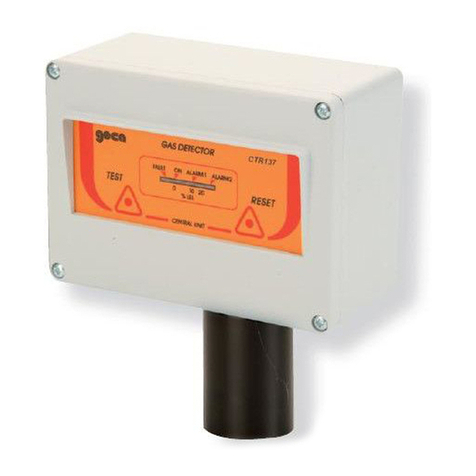
Geca
Geca CTR137M User manual
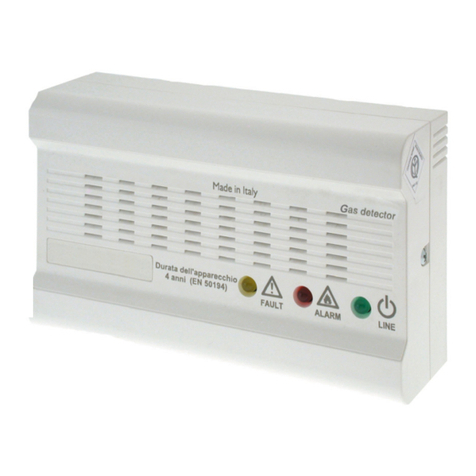
Geca
Geca GAMMA Series User manual
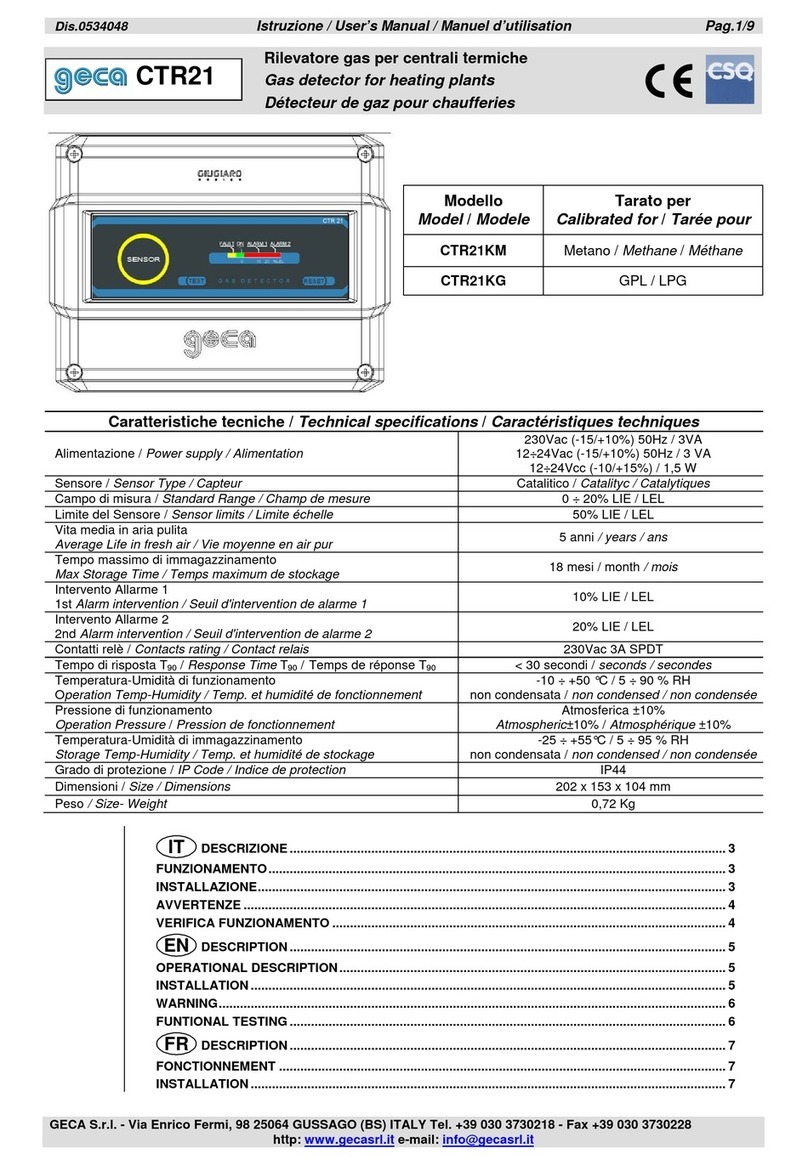
Geca
Geca CTR21 User manual
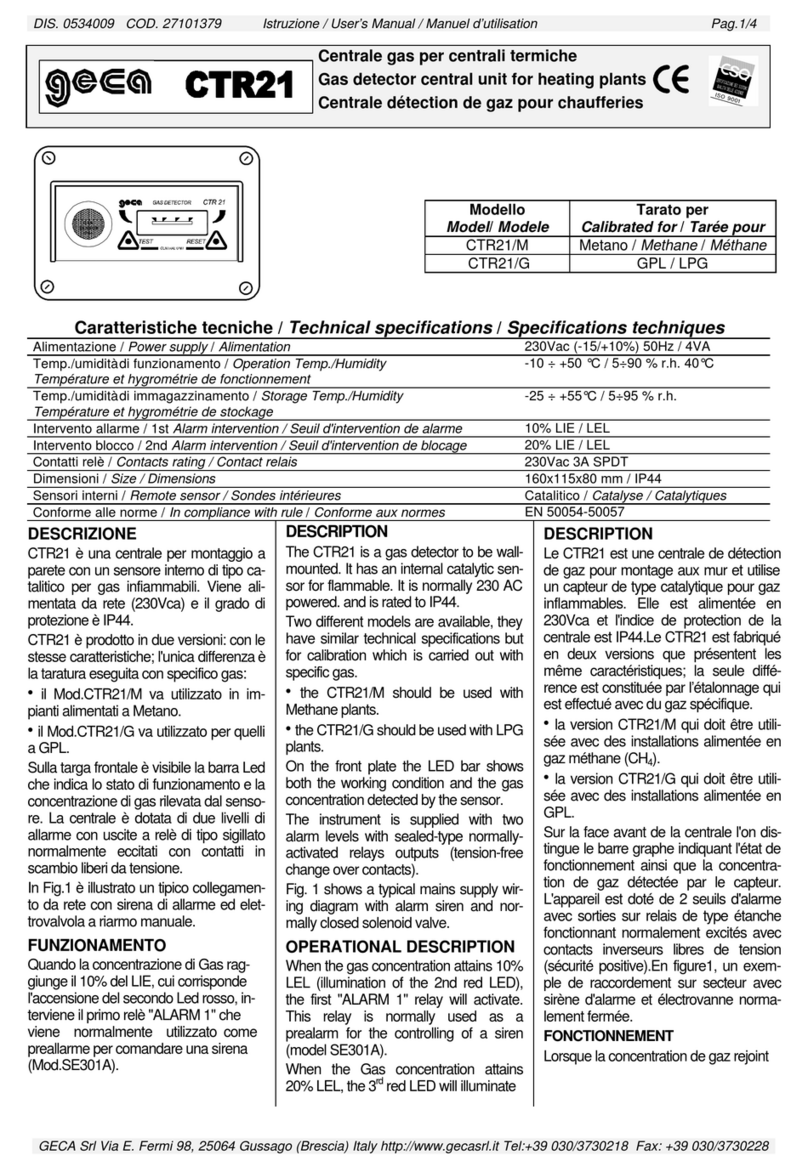
Geca
Geca CTR21/M User manual
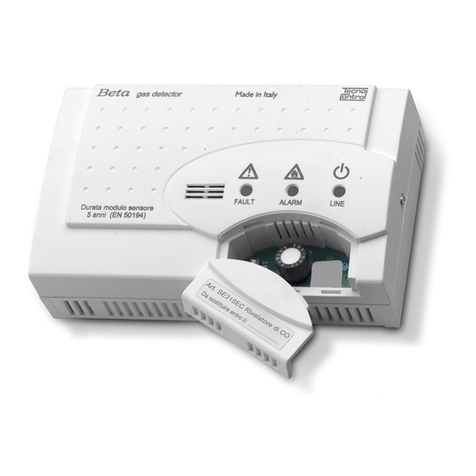
Geca
Geca Tecnocontrol Beta Series User manual
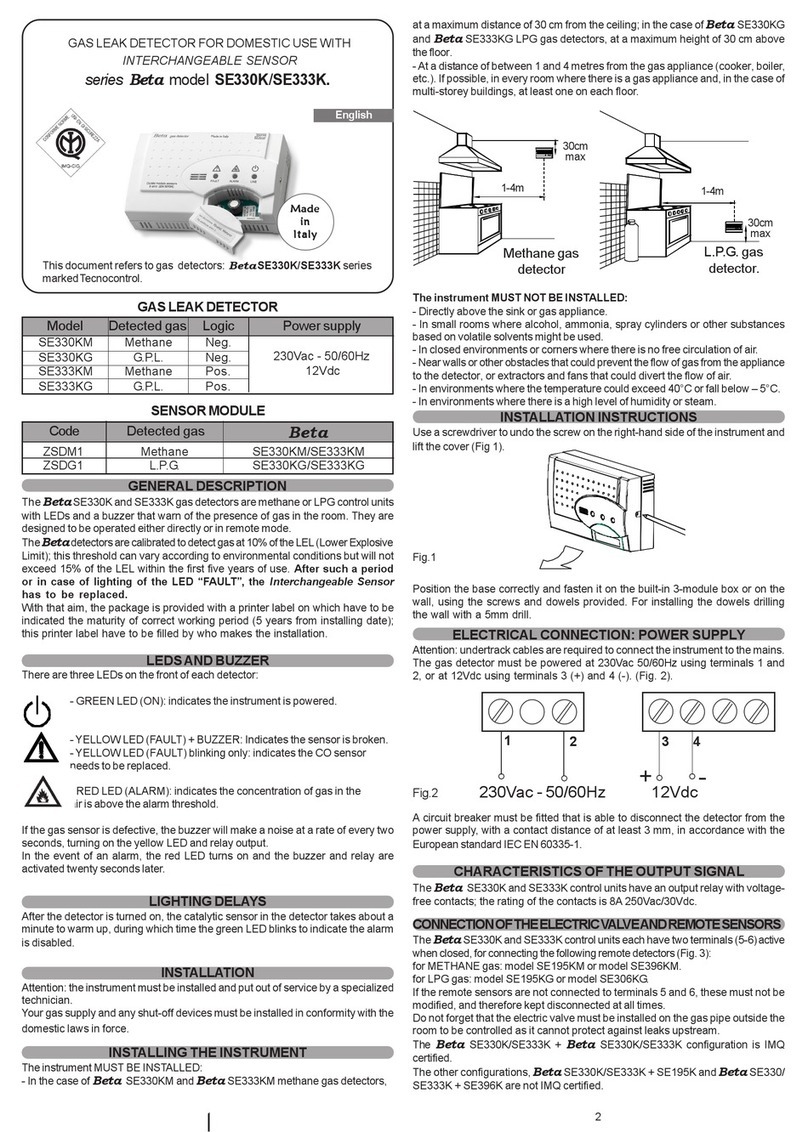
Geca
Geca SE330K User manual
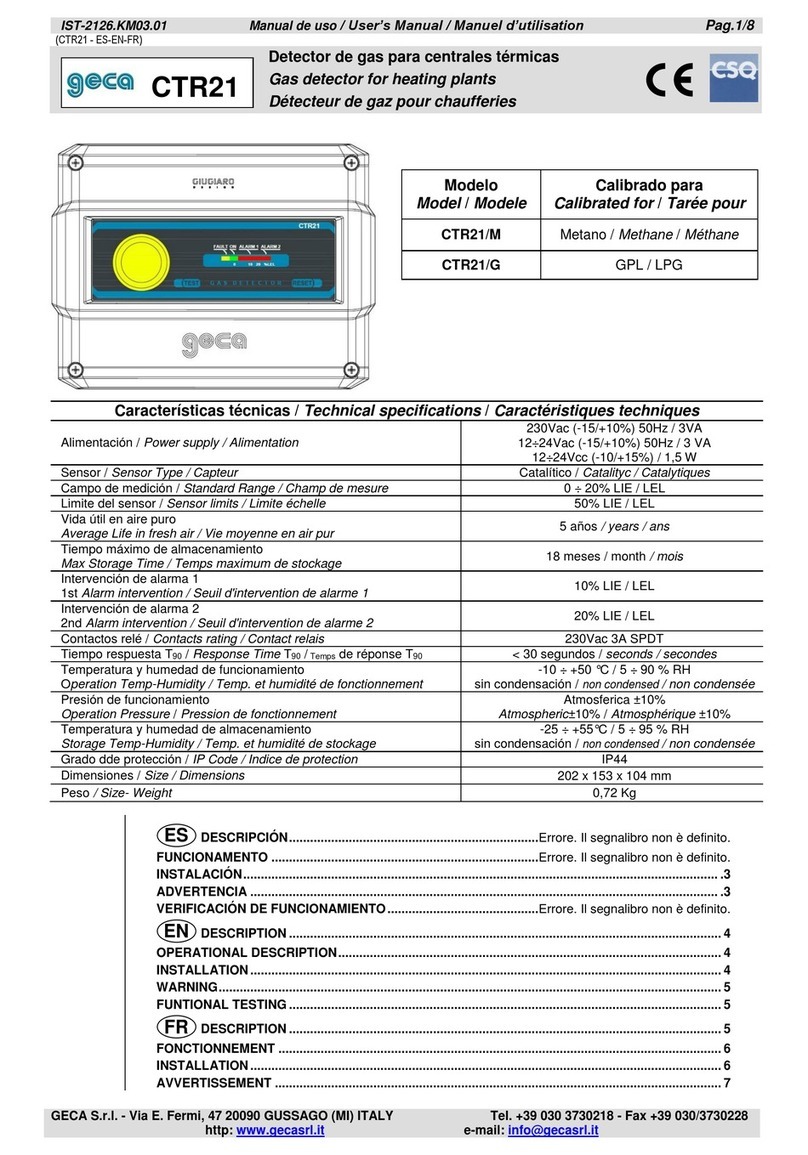
Geca
Geca CTR21/M User manual
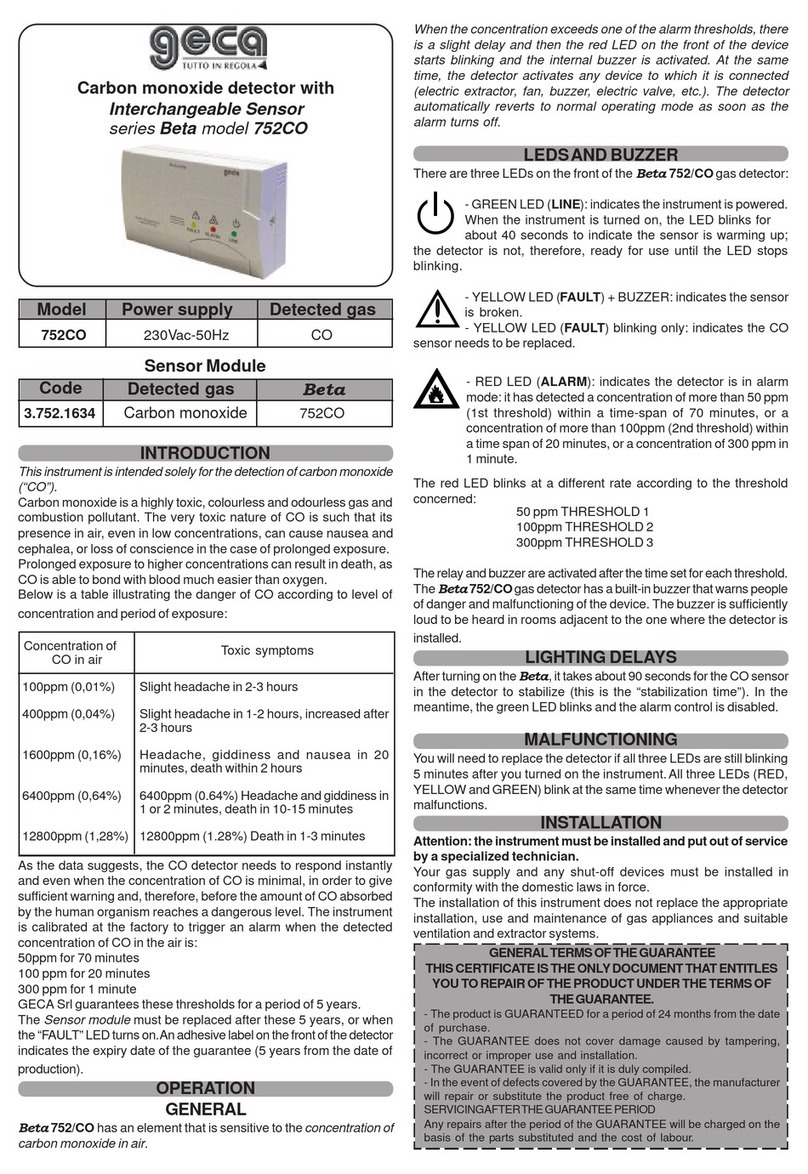
Geca
Geca Beta 752CO User manual
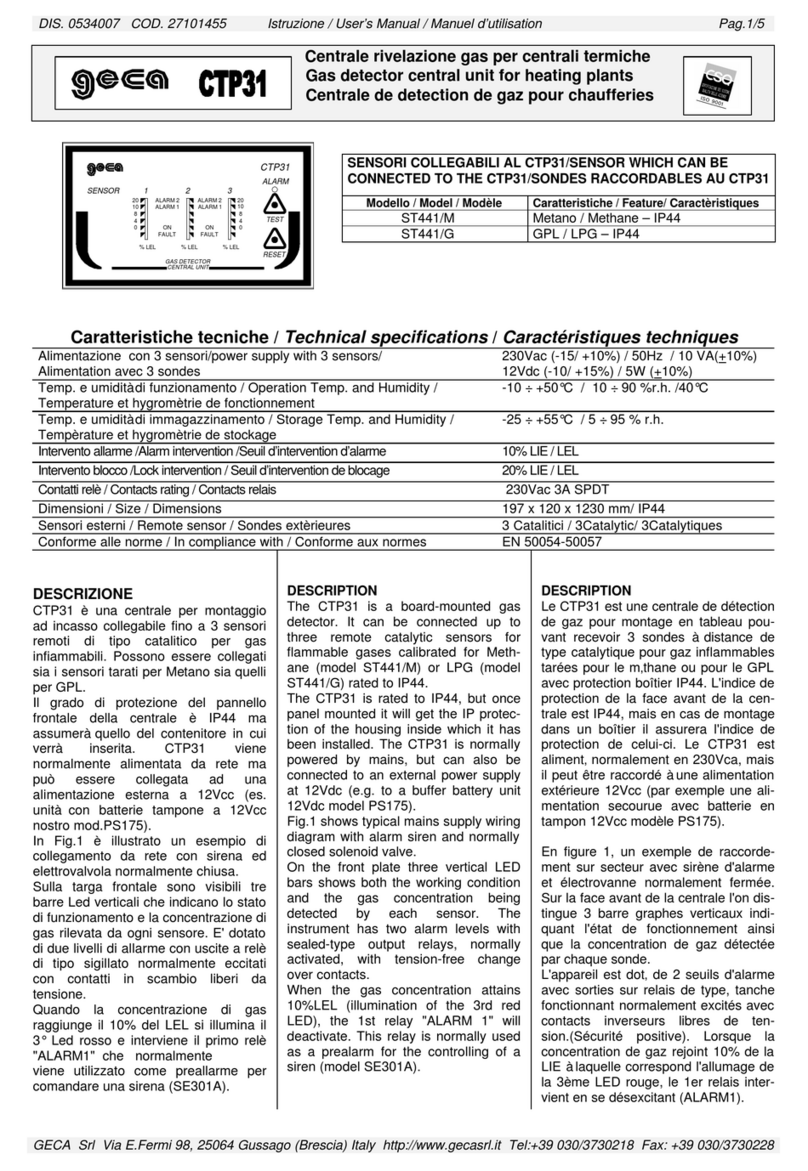
Geca
Geca CTP31 User manual

Geca
Geca SE235KM User manual
Popular Gas Detector manuals by other brands
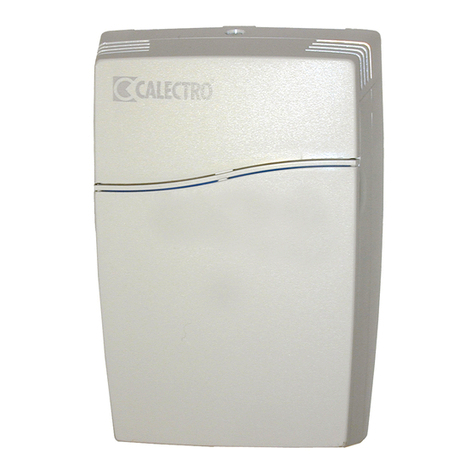
CALECTRO
CALECTRO SenseAir A-SENSE Manual for installation

Evikon
Evikon PluraSens E2658-LEL user manual
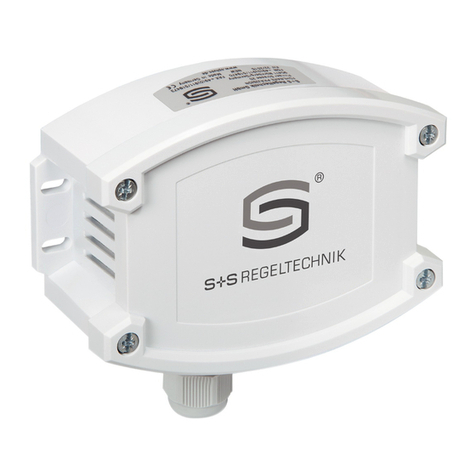
S+S Regeltechnik
S+S Regeltechnik AERASGARD AC02-SD-TYR2 Operating Instructions, Mounting & Installation

STATUS SCIENTIFIC CONTROLS
STATUS SCIENTIFIC CONTROLS FGD10A-M Installation, Commissioning & Routine Gas Testing Manual

WatchGas
WatchGas AirWatch MK1.2 user manual
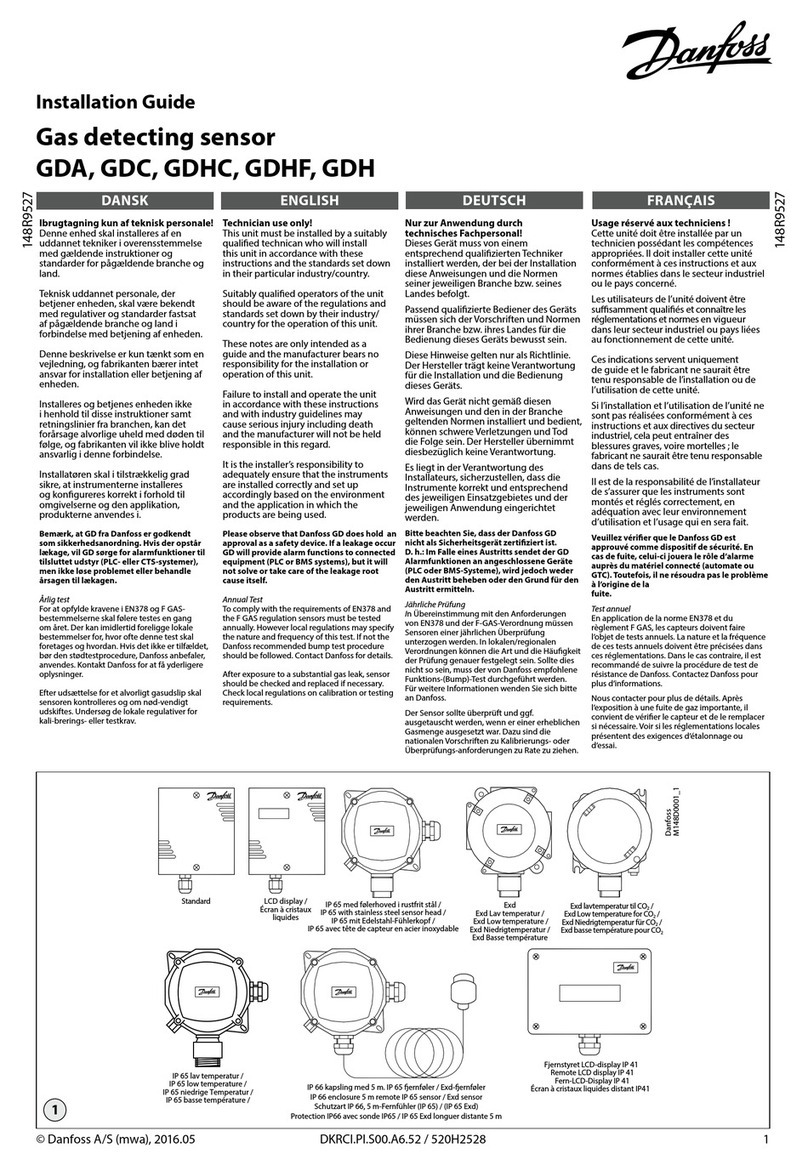
Danfoss
Danfoss GDA installation guide

